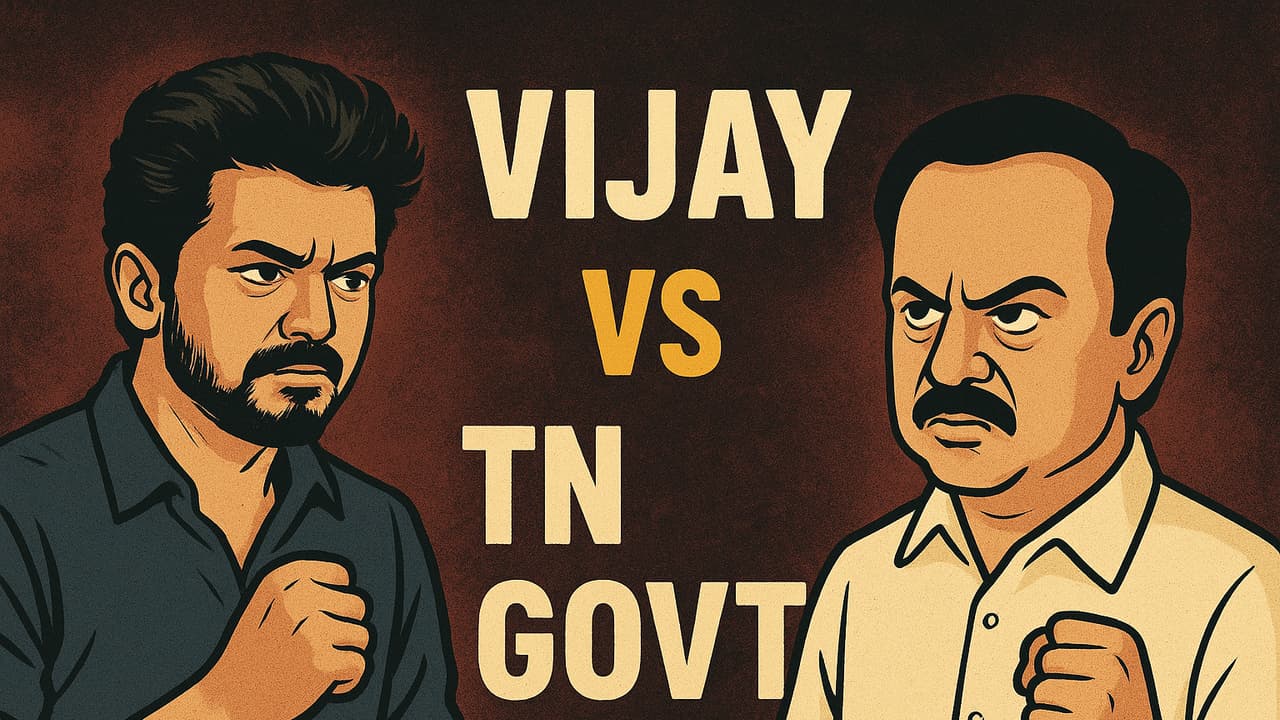Karur stampede echoes the Mahamaham tragedy of 1992 in Kumbakonam, where over 50 devotees died. Both incidents reveal the consequences of poor crowd management, unsafe venues, and VIP-centric arrangements. If it was Jayalalitha then, it is Vijay now.
Chennai: The responsibility of 41 deaths in the Karur stampede has been engulfed by the flames of a blame game. Living up to his on-screen reputation, Tamilaga Vettri Kazhagam (TVK) Chief Vijay delivered a slow-motion response days after the tragedy, with a cinematic style video message for his fans and political supporters to champion. “We went to almost five districts for protest. Nothing like this should have happened. CM sir, if you want to take revenge, do whatever you can, but do not touch my party men. I will either be at home or in the office,” he stated. Just days before the tragedy, Vijay had shared similar feelings of the political dispensation not allowing him and his party the freedom to gather. The Tamil Nadu government pushed back the allegations, saying that the tragedy was triggered by overcrowding and a sudden power disruption caused by the actor’s fans. Officials argued the venue itself was unsuitable, pointing out it was located near a petrol pump and drainage canal. They further alleged that TVK underestimated the turnout, as the expected crowd nearly doubled, swelling to more than 25,000 with supporters trailing actor-politician Vijay. Chief Minister Stalin warned against spreading rumours in dire circumstances.
Vijay or TN Govt: Who’s At Fault?
Social media has become a battleground of narratives.Supporters of Vijay hail him as a victim of political vendetta and accuse the government of negligence. DMK sympathisers counter that TVK’s lack of preparation and “fan frenzy” were the real culprits behind the stampede. The short answer? Both sides share the blame. Tamil Nadu government failed to ensure safety at a high-risk venue, while TVK misjudged the scale of its own mobilisation. The tragedy wasn’t born from a single lapse but from a chain of preventable mistakes. The state government was the final authority to decide the venue and ensure that proper arrangements are made, since Vijay’s tour at other venues had attracted thousands of his fans. Vijay and his party members should have recognized the scale of their own mobilisation and coordinated with authorities to implement stricter crowd management measures, including clear entry and exit points, safety barriers, and emergency response teams.
German Philosopher Georg Hegel famously said, “The only thing that we learn from history is that we learn nothing from history.” The Mahamaham stampede of 1992 in Kumbakonam and the Karur tragedy of 2025 stand as grim proof of that truth. Both events, separated by more than three decades, reveal the same fatal pattern of negligence where devotion and politics alike spiraled into chaos. While officials blamed a collapsed grill, survivors pointed instead to poor planning, blocked escape routes, and even police batons that sparked panic. Decades later in Karur, a political rally drew an overwhelming crowd into an unsafe venue, and panic once again claimed dozens of lives.
Jayalalitha, who was also the Chief Minister at that time, expressed genuine regret for the loss of lives and immediately distanced herself from the operational aspects. She highlighted the role of interference and how it could worsen the chaos. According to Walter Devaram’s autobiography, she did not punish any officials involved, instead taking the blame upon herself, calming the public, silencing critics, and moderating press outrage. The resemblances or the lack of it in 2025 may be a mere coincidence.
What’s Next for Tamil Nadu?
The Karur stampede is sure to cause ripples for a long time. Beyond the immediate grief and loss, it has placed Vijay and the DMK directly in the eye of a political storm. DMK has its task cut out, as the Karur stampede could be remembered as a failure of the state to protect its public. The state government has started to register cases against TVK’s leadership for attempting to incite unrest in the aftermath of the tragedy. Tamilaga Vettri Kazhagam (TVK) leader Aadhav Arjuna was booked by Chennai cyber police on September 30 under multiple sections, including causing provocation with intent to riot, making statements prejudicial to national sovereignty, and creating public mischief. Aadhav had called for a revolution in Tamil Nadu like that of Nepal and Sri Lanka, stating that a revolution similar to those in neighboring countries would be inevitable to end “state terrorism.”
TVK has took DMK to court, stating that police and goons deliberately created chaos, snapped power, and even stage midnight postmortems. The petition also alleged that “anti-social elements” who infiltrated the rally threw slippers and stones not only on their leader Vijay, but also on the public waiting to listen to the speech. Further proceedings and revelations in this case will decide the lifespan of Vijay, the politician. While DMK and AIADMK have long dominated the scene, the BJP has been steadily expanding its base, and incidents like the Karur tragedy could pave the way for a change in public perception and political allegiances ahead of 2026 assembly elections.
